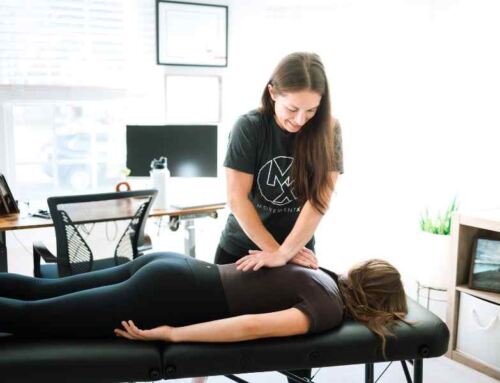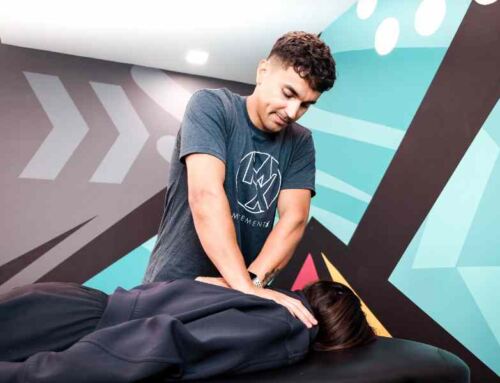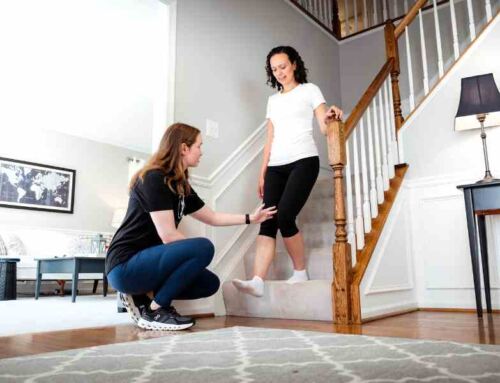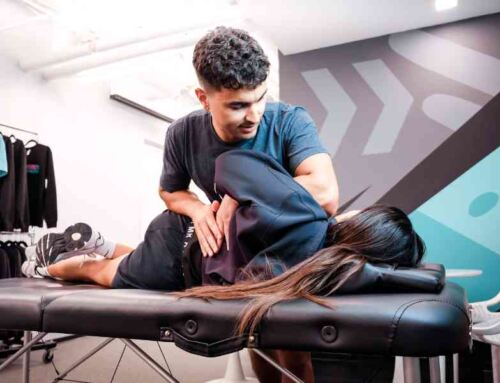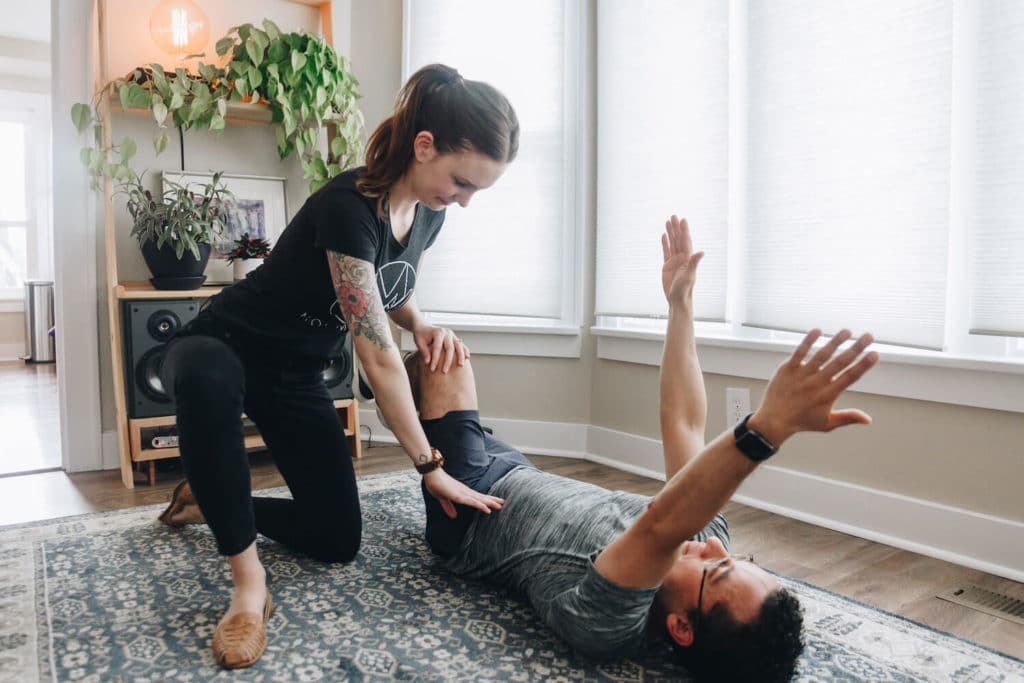
How Can Physical Therapy Help with Hypermobility Disorders?
Hypermobility Ehlers-Danlos Syndrome (hEDS) is a congenital connective tissue disorder that often results in chronically painful and unstable joints.
Physical therapy for hypermobility disorders plays a critical role in pain management and injury prevention for hEDS and other hypermobility conditions.
Since the joints of someone with hEDS are unstable and often quite painful, seeing a physical therapist can help to reduce pain and improve joint awareness and stability.
Here are the many ways physical therapy for hypermobility disorders can help manage and alleviate the symptoms of hEDS.

Guided exercise can restore healthy movement
It is not uncommon for people with hEDS to be afraid of exercise or movement. Often, there is a history of trauma or pain from trying exercise that keeps people from exploring their body and movements. A skilled physical therapist will assess the laxity of each joint, as well as the muscle strength and recruitment around that joint.
Those with hEDS also often have impairments in the way their muscles contract around an unstable joint, as the muscles are trying to do the work of the ligaments that aren’t stable enough. Once each joint is assessed for its mobility and muscle activation, a specific plan of safe, targeted exercises can be prescribed to facilitate joint control and stability.
Balance training can improve neuromuscular control
Balance and proprioception is another critical piece of the physical therapy plan for those with hEDS. Because many joints lack the appropriate strength and stability, especially in the ankles, knees and hips, it can be difficult to maintain balance or activate the appropriate stabilizers for some activities. Proprioception, which is the awareness or perception of movement or position of joints in the body, is typically quite difficult for those with hEDS due to nerve endings in the joints being injured or traumatized from chronic subluxations or dislocations.
It can be difficult to gain information on where some joints are positioned and how the muscles around them are working, which can lead to further injury and trauma to the joints. Working with a physical therapist on balance training, resistance exercises, and neuromuscular re-education drills can improve the central nervous system’s communication with each joint and improve overall balance and joint position sense.
Aquatic therapy can restore mobility and stability
Aquatic exercise can be very useful for those with hypermobility and chronic pain. Water provides buoyancy and can take the weight and pressure off of joints, allowing them to move fully with more support. Those with hypermobility and hEDS often find that exercising in the pool allows them to move with better range of motion and without the pressure on their joints that being out of the water can create.
A warm, heated pool also provides deep warmth to tissues that may need a little bit more heat to get moving. A physical therapist can guide you through the best movements to perform in the pool, depending on your goals and needs.

Corrective techniques can improve joint function
Even with consistent, dedicated strengthening and stability work, joint subluxations and dislocations may still happen. Learning corrective techniques to reestablish joint stability and position can help reduce pain and improve joint function.
Sometimes, these corrections will need to be done by a skilled physical therapist, however some can be done at home on your own. Your physical therapist can show you the best self-corrective techniques for your most problematic joints so that you can manage your symptoms on your own.
These techniques should be followed by joint awareness and stability exercises to prevent recurrence. A well rounded physical therapy program will include not only exercises to improve your strength and joint stability, but self-correction strategies to keep your joints safe.
Pain management techniques can relieve muscle spasms
A main source of pain in those with hypermobility and hEDS is muscle spasms. Muscles spasm in this population due to the inherent joint instability; the ligaments are too lax to adequately stabilize the joint, so the muscles chime in to help.
This often results in muscle spasming, as a muscle’s job isn’t usually to provide joint stability, but joint motion and strength. Relieving these painful muscle spasms can be useful but can also destabilize the joint if not reinforced with a strength program.
Your physical therapist can help to relieve these painful spasms and provide reinforcement to the joint to give it some stability and control. Unwinding this painful pattern is key to keeping your joints safe and functioning.
Pain management techniques can come in many forms. There are many topical pain relief creams, braces for joints, taping methods, as well as pharmaceutical prescriptions to manage chronic, persistent pain.
There is, unfortunately, not a one-size-fits-all solution and managing pain should be done on an individual basis. Everyone’s body is different and will require different interventions for pain relief. Seeing a physical therapist is a critical part of a sustained pain management plan.
Pace management to minimize fatigue and POTS
Another common symptom of hEDS is fatigue and Postural Orthostatic Tachycardia Syndrome (POTS). Sometimes, fatigue can keep people with hEDS from seeking treatment for their joint pain and instability. Those with POTS symptoms find it difficult to participate consistently in an exercise program, as they will experience bouts of significant fatigue and dizziness.
Knowing how to manage fatigue and POTS symptoms is critical to helping those with hEDS, as these symptoms can sometimes be the barrier to seeking treatment. Self pacing techniques, progressive cardiovascular exercises (if appropriate), and compression garments, as well as fluid management are all some ways that physical therapy can help to manage these often debilitating symptoms.
Conclusion
It’s critical for those with hEDS to find a knowledgeable physical therapist to help guide them through strategies and exercises to reduce pain and improve function. Effective physical therapy for hypermobility disorders can be hard to find.
At MovementX, we have kind, caring providers who specialize in treating patients with hEDS and hypermobility spectrum disorders. Click here to schedule a session today.


